
Planning a trip to Belgium typically includes stops in Brussels and Bruges; but if I’m being honest, my favorite city in Belgium is Ghent. I have visited Belgium many times since moving to Cologne, Germany in 2019, and Ghent is always one of my highlights. I am convinced Ghent is the most underrated city in Belgium. Which is saying a lot, because I think Belgium is one of the most underrated countries in Europe. Go ahead and fight me on it in the comments, but this small European destination is a powerhouse when it comes to food and travel experiences.
In this post, I hope I can convince you that Ghent is worth visiting with this ultimate travel guide to Ghent!
After visiting Ghent a couple of times, I would recommend at least 24 hours to really soak in all the history, culture, and relaxed vibes of this gothic city. Ghent was the largest city in Europe behind Paris during the Medieval period. These days it is often neglected in favor of more famous places, but Ghent is a perfect combination of storybook streets, romantic canals, bohemian flair and cosmopolitan amenities.
The Complete 24 Hour Guide to the Best of Ghent
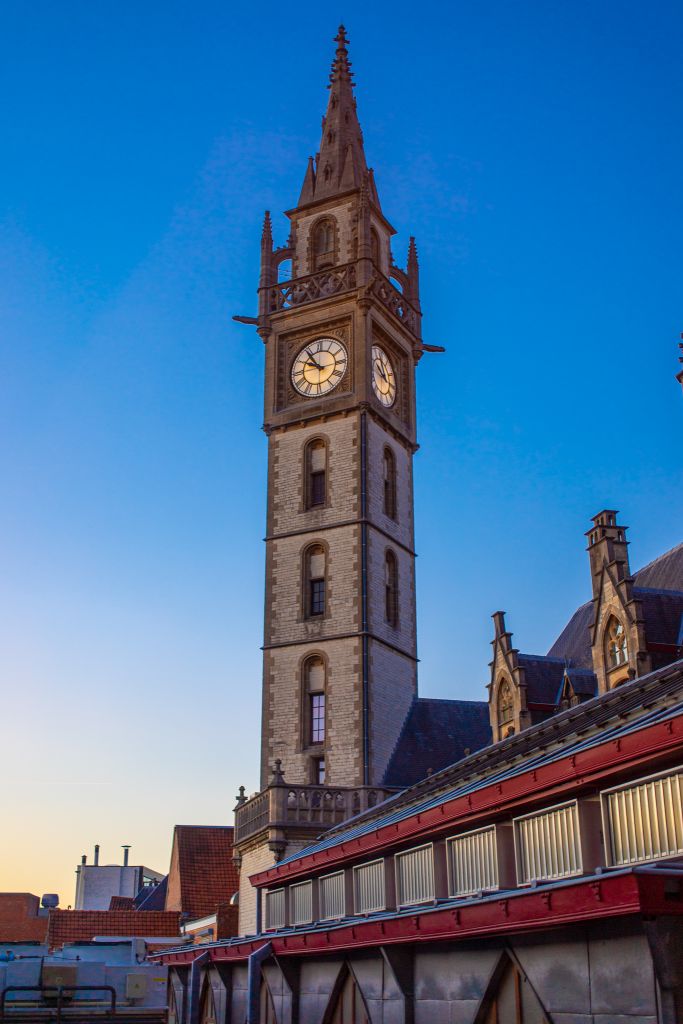
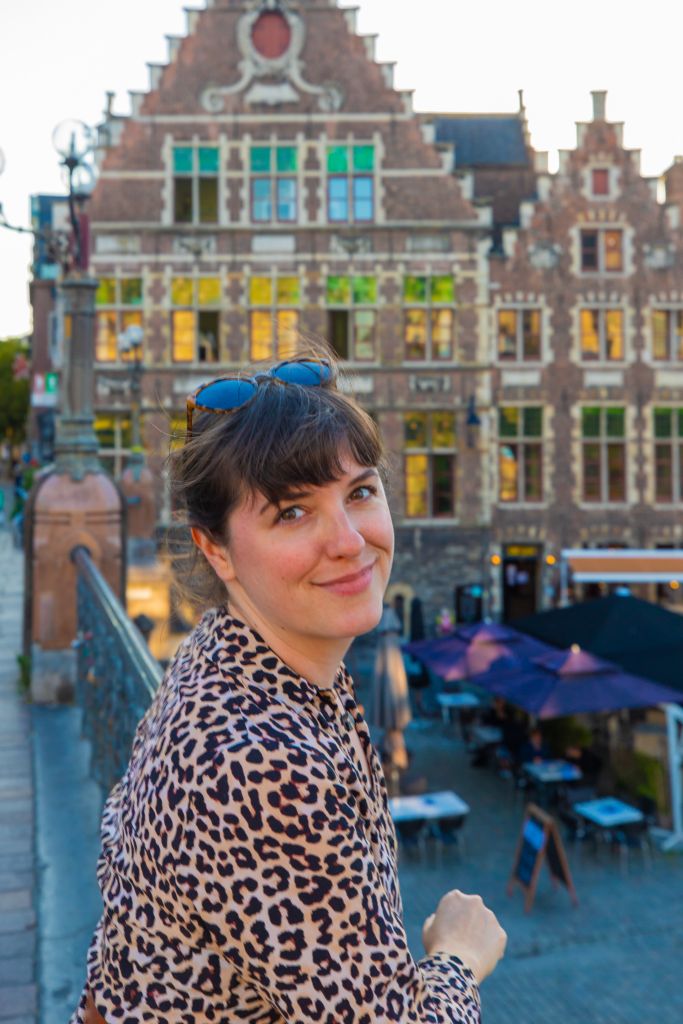
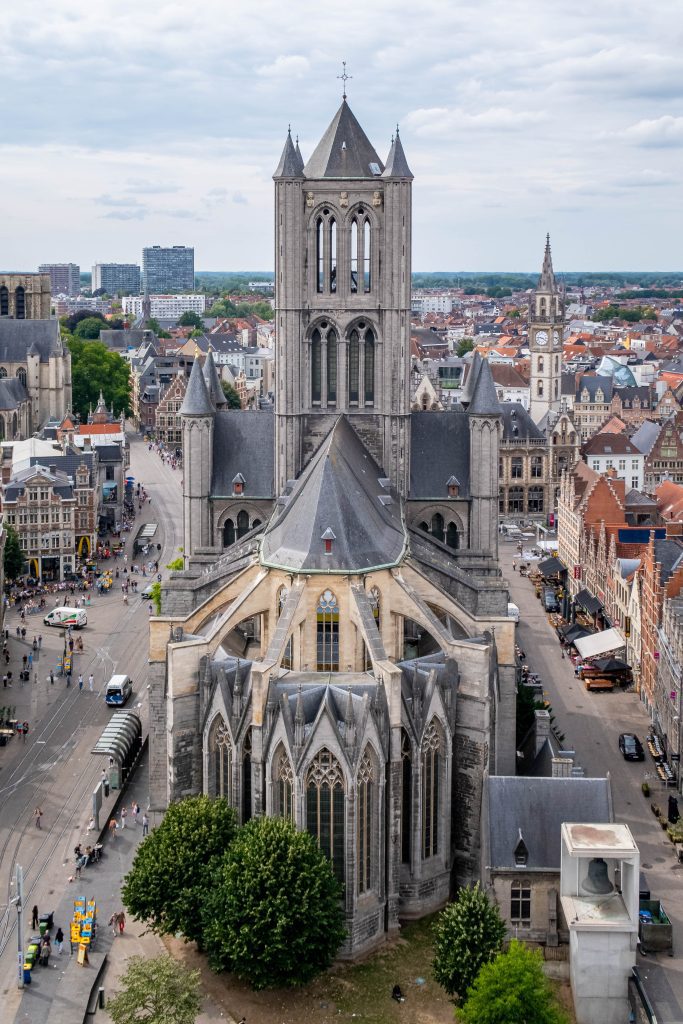
Top Places to See in Ghent
Three Medieval Towers
One of the most iconic staples of the Ghent skyline are the three medieval towers, clustered together in the center of town. The best viewpoint to see all three towers at once is from the Sint-Michielsbrug arched stone bridge. It is especially nice around sunset when the lively student population clusters around the river.
- Saint Bavo’s Cathedral (Sint-Baafskathedraal): Gothic church constructed between the 13th and 16th centuries. It features impressive vaulted ceilings, baroque chapels, and a rich collection of art.Entry to the main cathedral is free.
- Saint Nicholas’ Church (Sint-Niklaaskerk): Ghent’s earliest examples of Scheldt Gothic architecture, built in the 13th century using blue-gray Tournai limestone. Its unique central tower was designed to serve as a civic lookout point before the Belfry was constructed.
- Belfry Tower: Standing 91 meters tall, the Belfry of Ghent is a UNESCO World Heritage site and a key symbol of the city’s medieval autonomy. Completed in the 14th century, it once held the city’s charters and housed watchmen who rang the alarm bell in times of danger. Visitors can climb to the top (via stairs or elevator) for panoramic views over the city center.

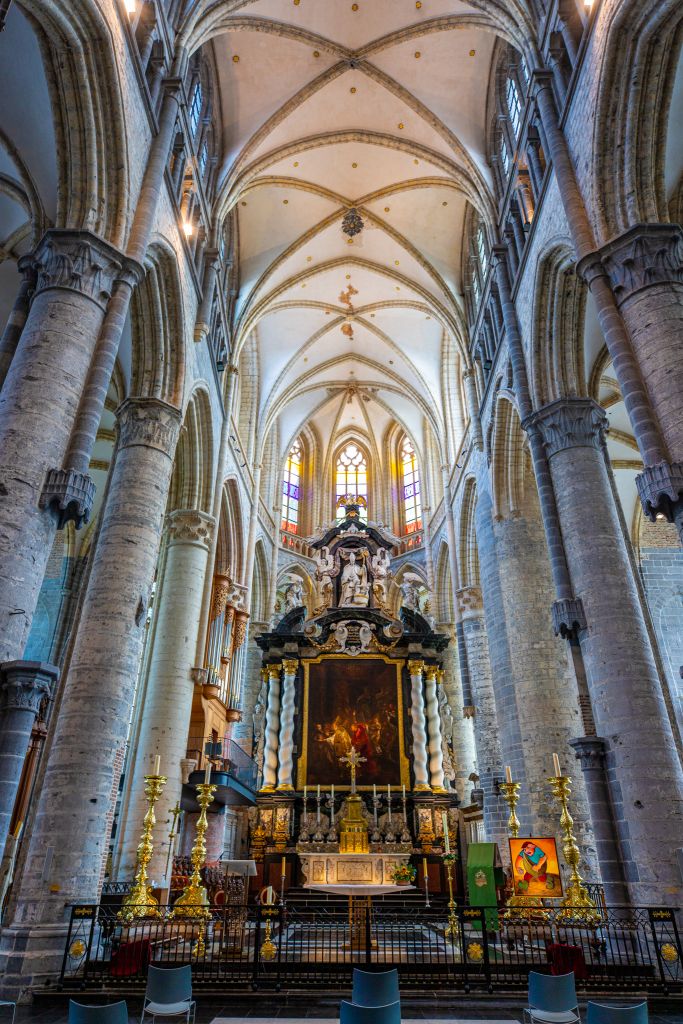
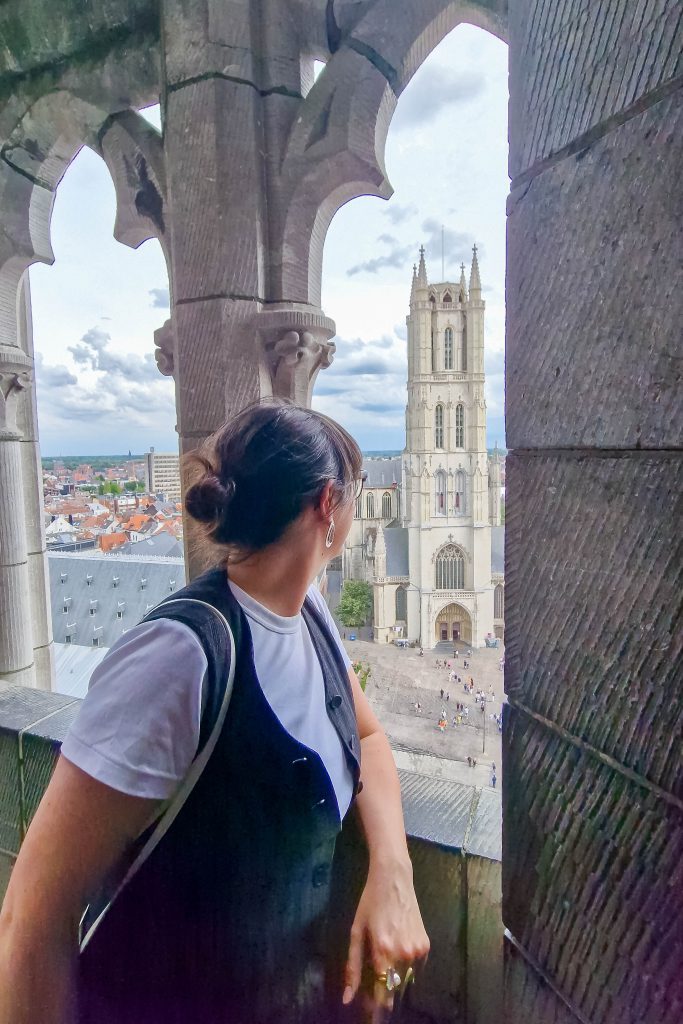
Ghent Alterpiece
Inside Saint Bavo’s you will find the masterfully painted Ghent Altarpiece. Millions of people have visited this painting, and it is inextricably linked to Ghent’s history. Formally titled The Adoration of the Mystic Lamb, the Ghent Altarpiece is a 15th-century polyptych by Hubert and Jan van Eyck, regarded as a landmark in Northern Renaissance art. The van Eyck brothers are Belgium’s most famous classical painters, well known for their hyper realistic early Renaissance paintings of people.
The complex history of the Ghent Altarpiece also includes some intrigue and theft! The Ghent Altarpiece was targeted by the Nazis, particularly Adolf Hitler, who coveted the artwork for the centerpiece of his planned Führer Art Museum. He wanted it because of its fame and importance, but also because it had been forcibly repatriated to Belgium from Germany by the Treaty of Versailles. The altarpiece was stolen and hidden in the Altaussee salt mine, along with other looted art. It was recovered by the Monuments Men in 1945 and returned to Belgium.
Located in a specially designed chapel inside Saint Bavo’s Cathedral, the altarpiece was fully restored between 2012 and 2020, revealing vibrant color and fine detail. Tickets are required for timed entry, and multilingual audio guides are available.
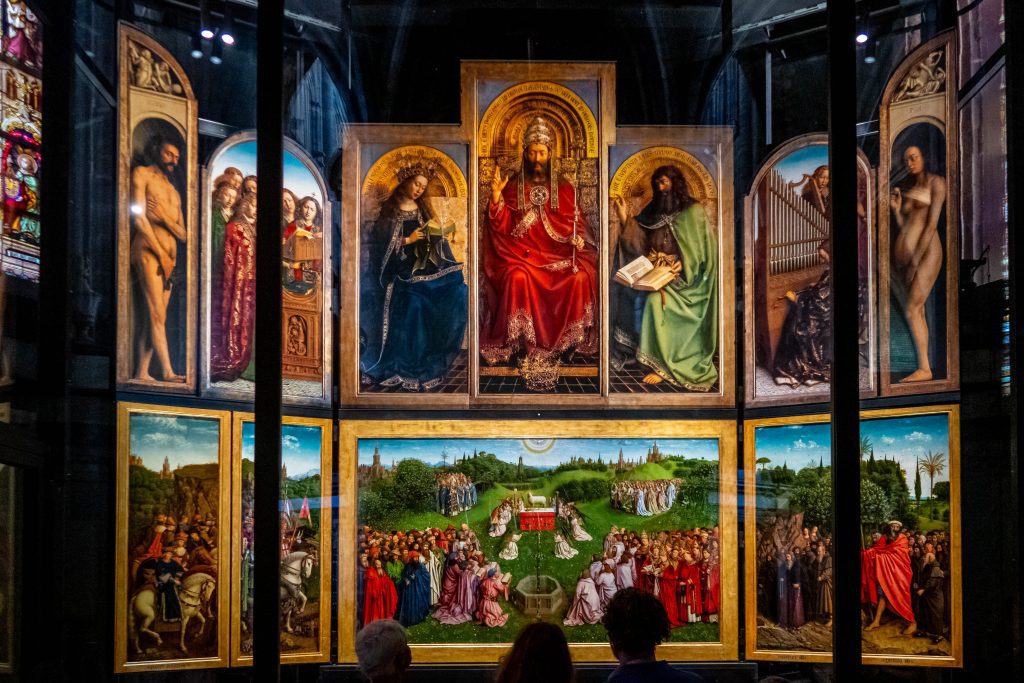
Castle of the Counts
Another historical spot to check out on your visit to Ghent is the imposing Gravensteen Castle, also called Castle of the Counts. Dating back to the 12th century, the large fortress sits on the corner of a canal with a medieval grandeur that is unmissable. Unlike many castles in Flanders that have fallen into ruin, this one is remarkably intact, complete with ramparts, a moat, and reconstructed interiors.
I think the castle is most impressive from the outside, but if you want to visit the interior, entry is ticketed. A self-guided audio tour is included with admission. Inside, you’ll find a rather grim collection of medieval torture devices alongside exhibits on Ghent’s history. The rooftop offers strong views over the historic center.
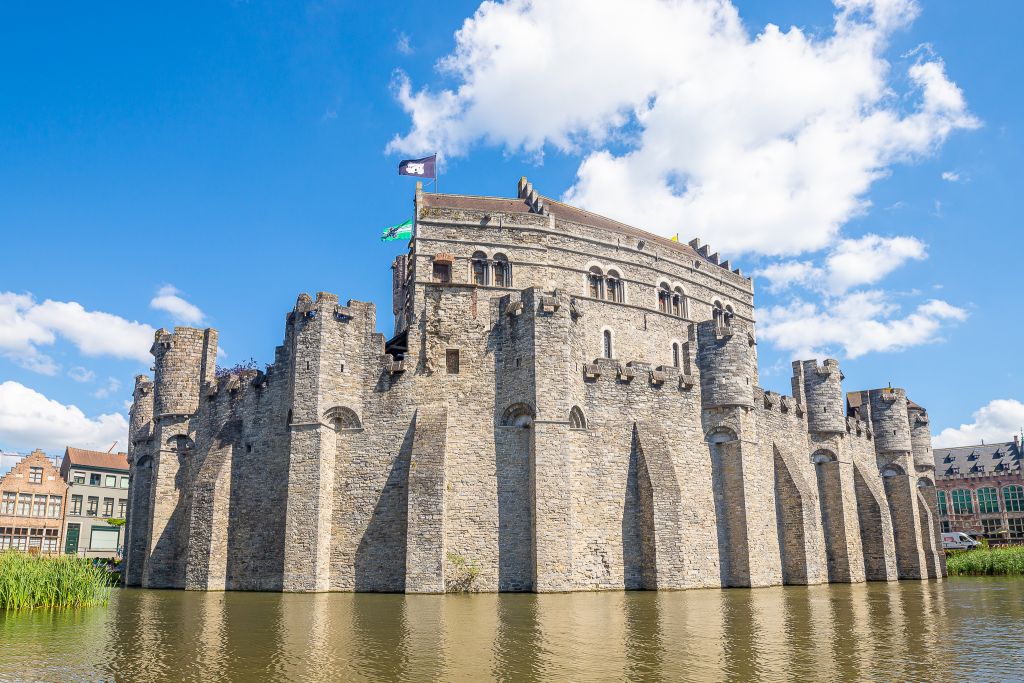
Graffiti Alley
Graffiti Alley is a narrow pedestrian lane that functions as a legal street art zone in central Ghent. Originally transformed into a public art space in the 1990s, every inch of this small street is covered in an ever changing patchwork of creative graffiti and street art murals. You’ll see political motifs, abstract murals, and street style logos of local artists. It is constantly changing — local and international artists repaint the walls regularly, making no two visits the same. We even saw one being painted during our visit! It’s free to access 24/7 and located just off Hoogpoort, steps from the city’s main attractions.
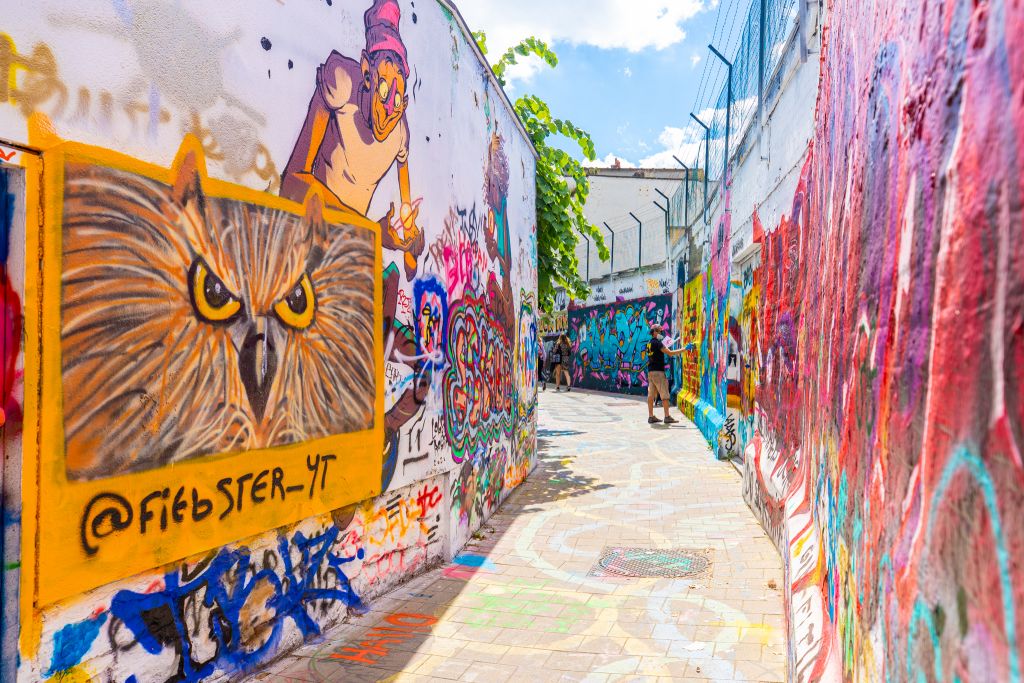
Best Things to Do in Ghent
Canal Cruise
I think you can admire the canals just as nicely by foot (plus you can enjoy a beer along the banks at one of the MANY waterside bars; but if you are interested in seeing the city from the water, consider taking a canal cruise! This is a very popular activity to do in Ghent.
There are several cruise providers in town, but they all follow roughly the same path. I have always gone with Boat in Ghent. The boat tours last for 1 hour, cruising along the historic canals and giving you history about the city in three different languages. The main pick up point is near Gravensteen Castle and you can check the times and options at the nearby tourist center. There are also kayak rentals for exploring the canals, if you want a more active way to appreciate Ghent’s waterways.
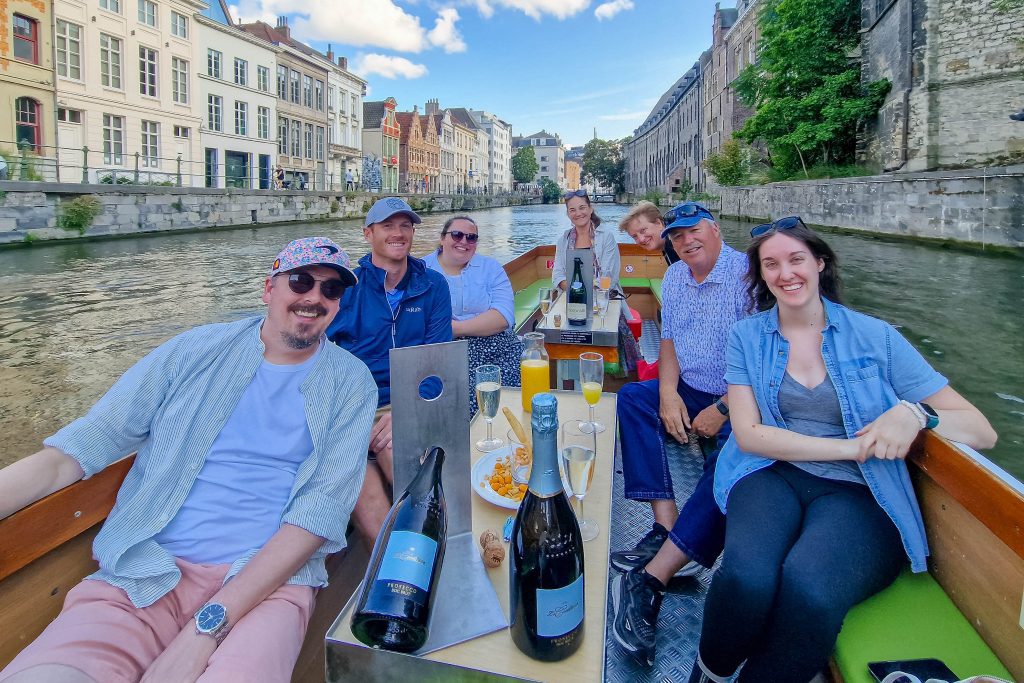
History of Chocolate Workshop
My sister is a pastry chef, so when we travel together, we often try different cooking classes and experiences. On my most recent trip to Ghent, we signed up for the Chocolate History Workshop at Chocolade Ambassade. This 2 hour workshop is completely different from any other chocolate experience I have tried before–in all the best ways! It was really unique.
Owned by a friendly couple who thoughtfully designed this experience, you’ll be guided through the origins, history and evolution of Belgian chocolate through hands-on demonstrations. We ground our own cacao beans the way the Mayas and Aztecs did. We whisked together a 17th‑century hot chocolate recipe, and tasted bonbons that trace Belgium’s chocolate timeline (including the first pralines in Ghent circa 1635).
Hosted in a 16th‑century historic townhouse, the workshop is limited to eight people and conducted in English. The business translates to Chocolate Embassy, so after the workshop, you can purchase a curated selection of the best chocolates and pralines from Belgium which includes a “chocolate passport” describing all of the chocolates.
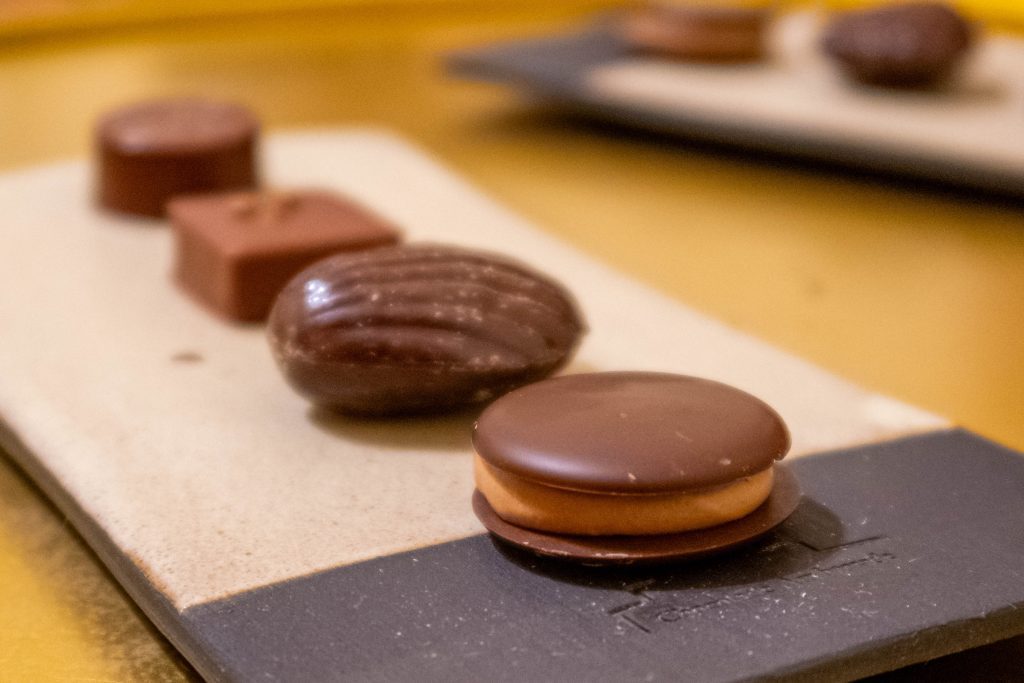
Boutique Shopping
I was shocked by the number of modern, stylish boutiques in Ghent, especially in the Het Zuid area! The main shopping street is Groot Vleeshuis, but you’ll find plenty of independent shops all around this neighborhood, especially leading up to the Ghent University campus. If you happen to be in Ghent on the weekend, check out the Vrijdagmarkt flea market on Friday mornings and Saturday afternoons for street food and vintage items.
Golden Hour Walk
I would strongly recommend keeping an eye on what time sunset in Ghent is, because there is something truly stunning about this city at golden hour. The medieval brick facades and sunlight reflections off the canals illuminate the city’s skyline in this magical way. I am not the only one who knows this either – you’ll see locals pack the banks of the river and canals around sunset. It is especially crowded between the Grasbrug and Saint Michael’s bridge. It is fun though! There is such a buzzy energy in Ghent at this time of day.
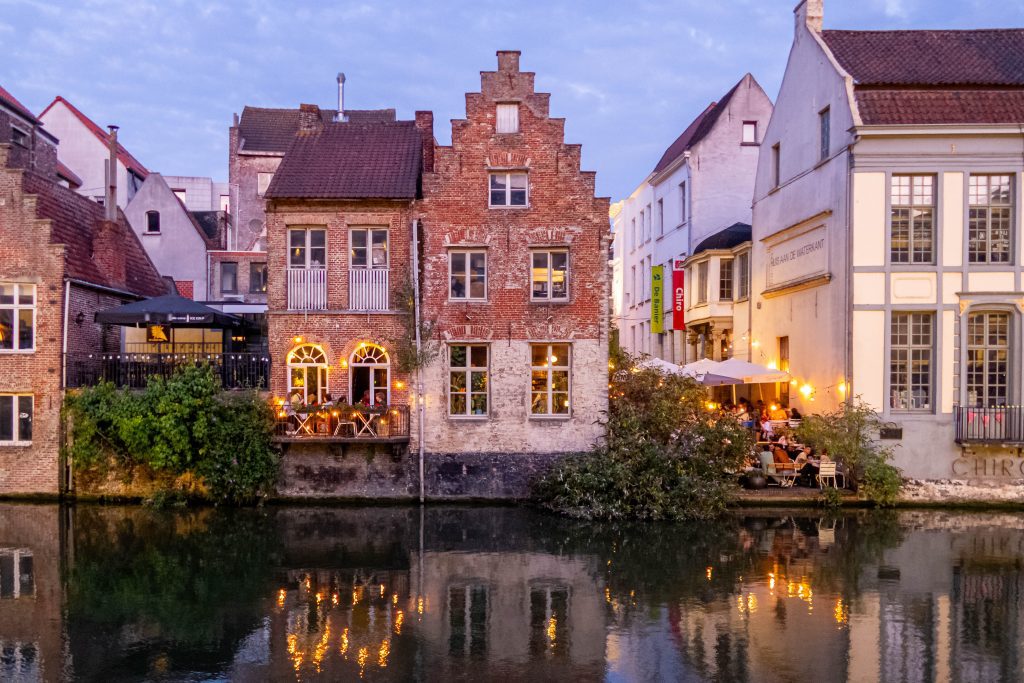
Travel Logistics for Ghent
How to Get to Ghent
Ghent is really easy to get to, no matter what mode of transportation you are using. If driving, there are several easy highway routes to get to Ghent. Once in the city (aka crossing over one of the bridges), paid parking is widely available in garages. It is important to remember that the old city is a ticketed pedestrian zone and cars need to be registered. This is easy to do with your hotel, but don’t forget because it is a pricey fine if you park in this zone without authorization.
If taking public transportation, this hidden gem is only half an hour away from Brussels by train. The main train station in Ghent is called Gent-Sint-Pieters and it is located about 10 minutes away from the old city center. It is also really close to Bruges, which is 30 minutes by train to the east of Ghent. From either Brussels or Bruges, you could easily visit Ghent as a day trip.
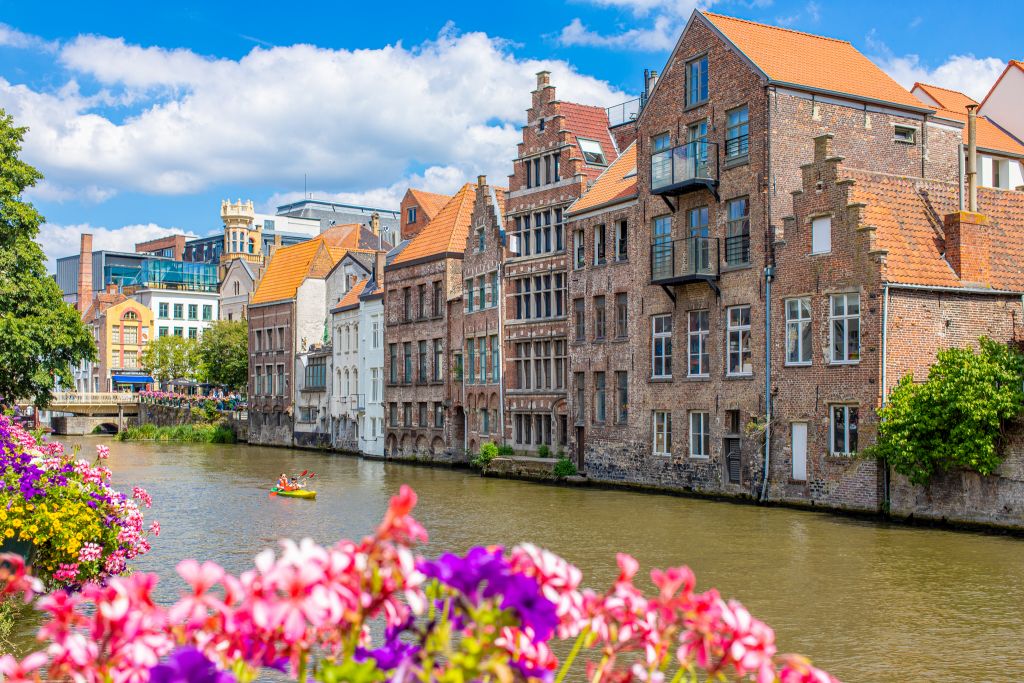
How to Get Around in Ghent
Like so many other Belgian cities, Ghent itself is super walkable and bikeable. You’ll see locals and tourists alike exploring Ghent on two feet or two wheels! I think Ghent is the perfect place to wander on cobblestone streets and along flower lined canals, because its footprint is small. You can cover most of the highlights in just a few hours.
Ample affordable public transit is also available within the city. The streetcar is especially convenient, especially if you are coming from the main train station.
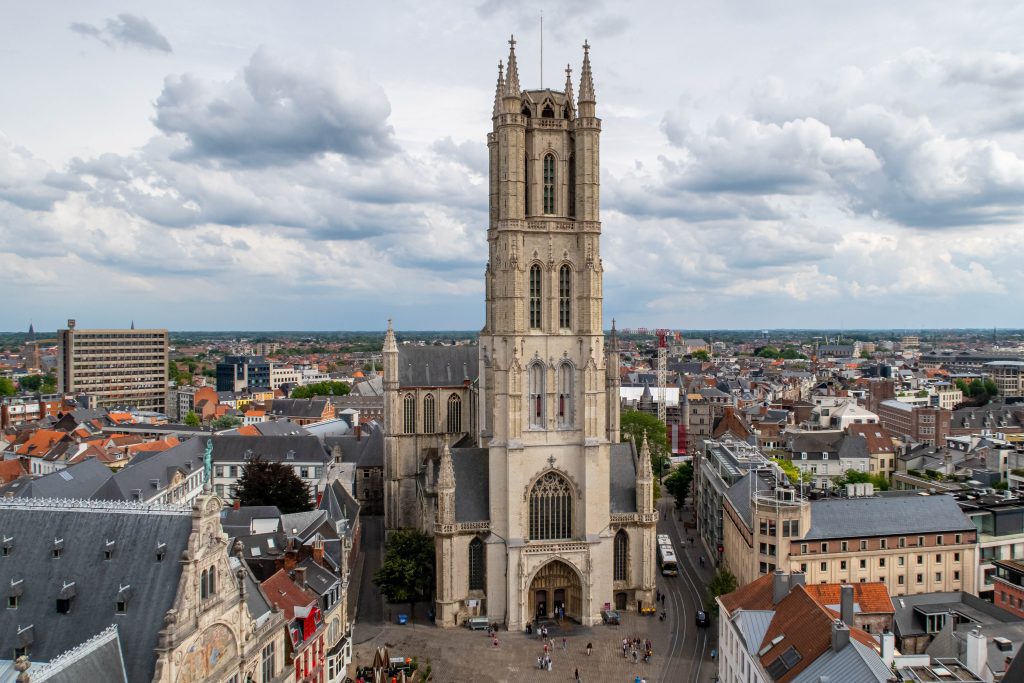
Where to Stay in Ghent
With an unparalleled location on Ghent’s main square and newly renovated interior, 1898 The Post is an obvious choice for boutique accommodations in Ghent. I’ve stayed here on all three of my visits to Ghent. I just love it that much! This 19th-century, neo-Gothic post office building has been converted to a 38-room hotel with plush accommodations and unique design. We loved our comfortable stay in a lofted room with a private balcony overlooking Saint Nicholas' Church!
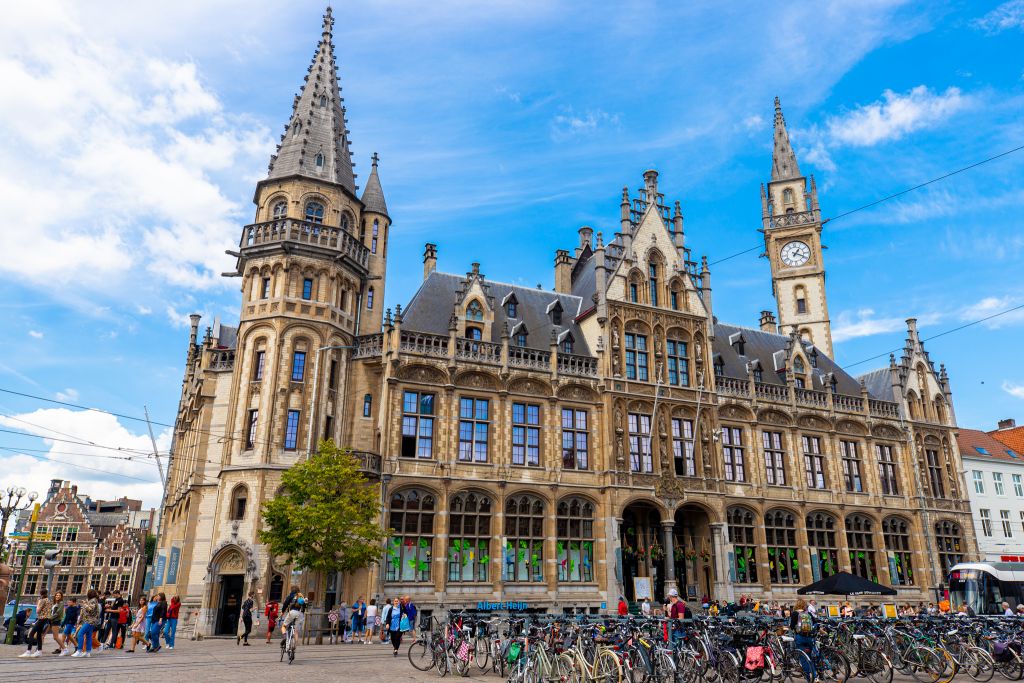
Where to Eat in Ghent
To avoid this post getting too long, I actually have an entirely separate blog post with my favorite Ghent bakeries, restaurants & bars. But needless to say, Ghent offers an excellent selection of great food, ranging from casual pubs to high-end fine dining. You can really feel the pride and pleasure residents take in their restaurant scene. Comforting Flemish specialties like rich fish stews and cured meats are only the beginning! Foodies can discover exciting global cuisine, veggie forward menus, and the freshest seafood you could want in Ghent. Find my restaurant suggestions for breakfast, lunch and dinner, please check out my Ghent restaurant guide.
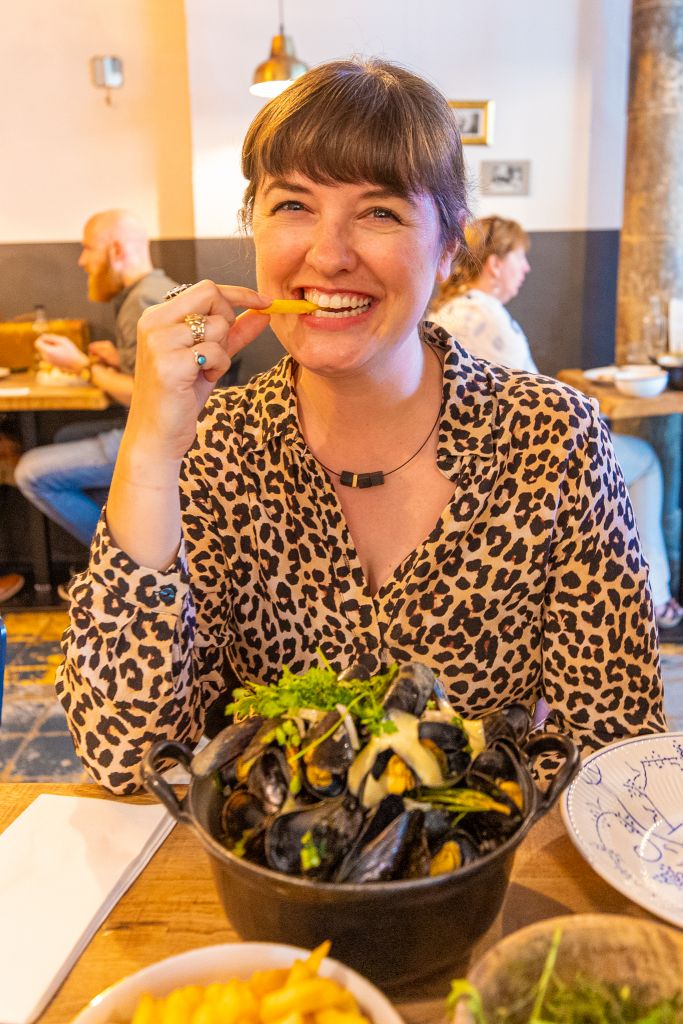
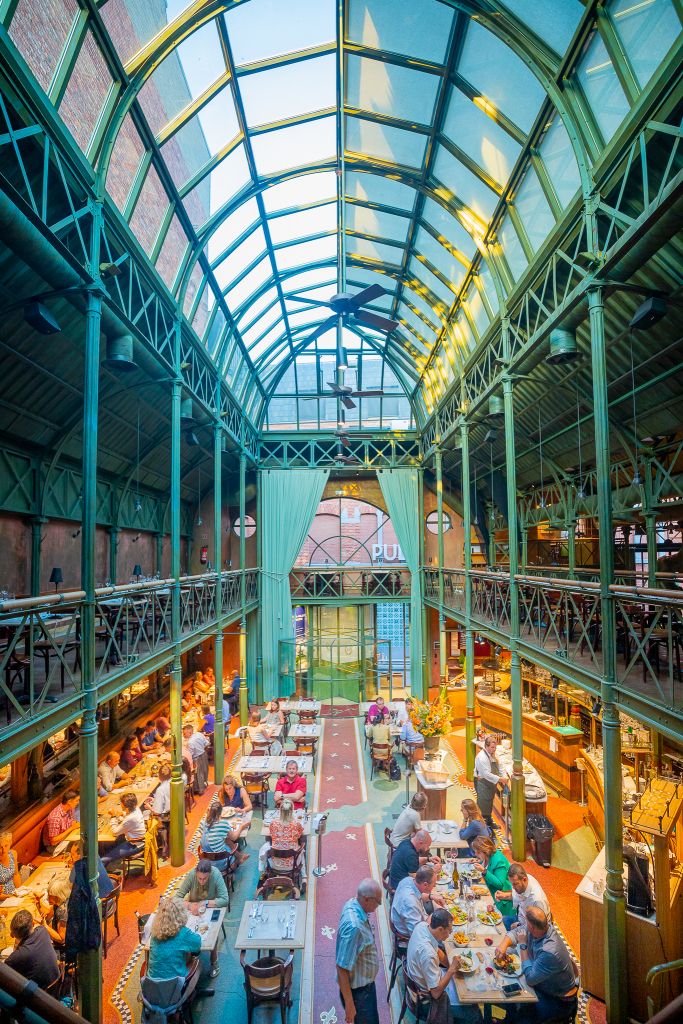
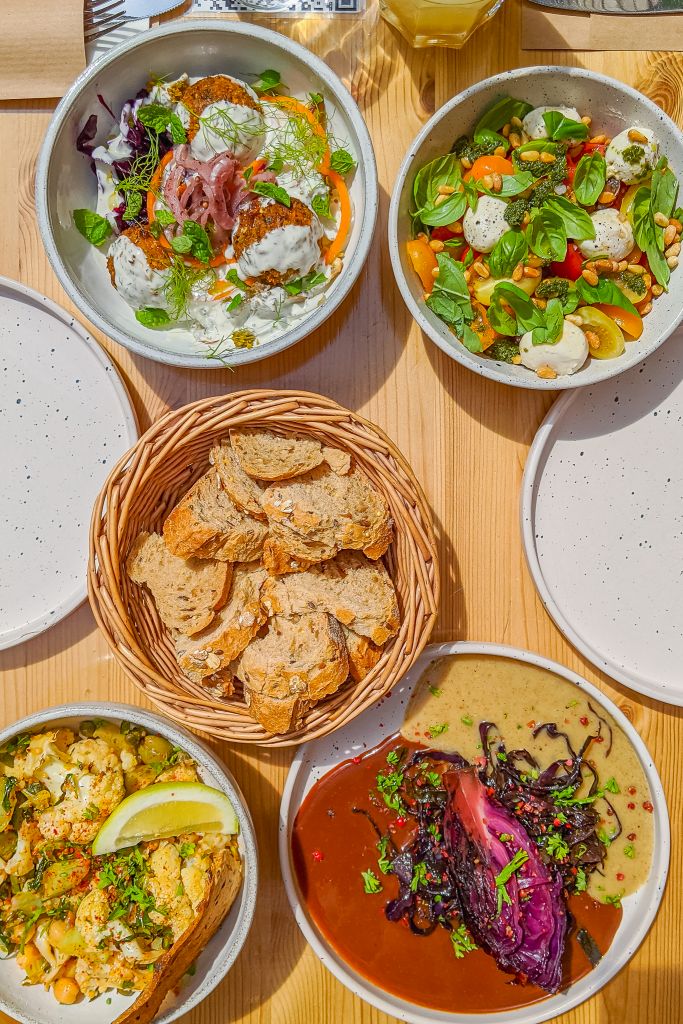
Where to Drink in Ghent
It should come as no surprise that Belgium is a wonderful destination for those who like to imbibe. Belgian beer is world famous. If you aren’t familiar with Belgian beer culture, have no fear – I’ve written a comprehensive Belgian beer guide to help you discover your new favorite style of beer! A few of my favorite beer bars in Ghent are:
- Trollekelder: A funky troll themed bar with an impressive 200 beers on the menu and a nice patio next to a church
- Dok Brewing Company: Microbrewery and tap room in an old industrial part of town. Really cool vibes.
- Waterhuis aan de Bierkant: A former brothel turned cozy beer pub with a great selection and friendly bartenders
- Dulle Griet: they have a beer where you have to give a shoe as collateral because the glass is worth nearly 100 euros!
If you’re in the mood for cocktails instead, I can recommend The Cobbler as the perfect watering hole to end your 24 hours in Ghent. Housed inside the 1898 Post Hotel, this upscale cocktail bar feels like walking into a rich person’s private palace bar. The decor is impeccable, the sunset views over the canal are unparalleled, and their drinks are top notch.

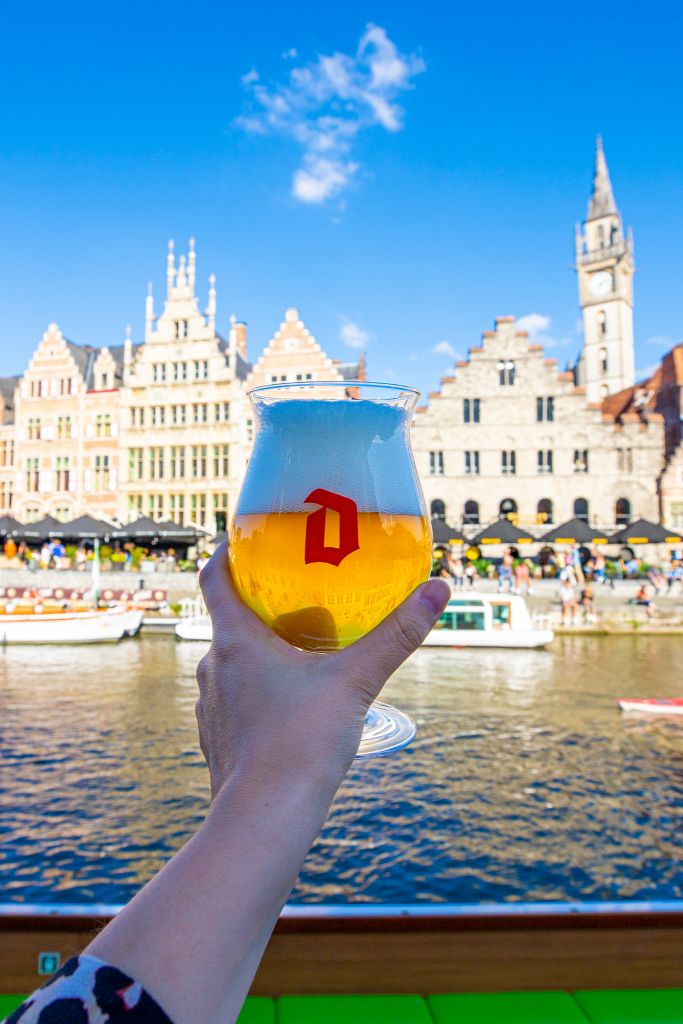
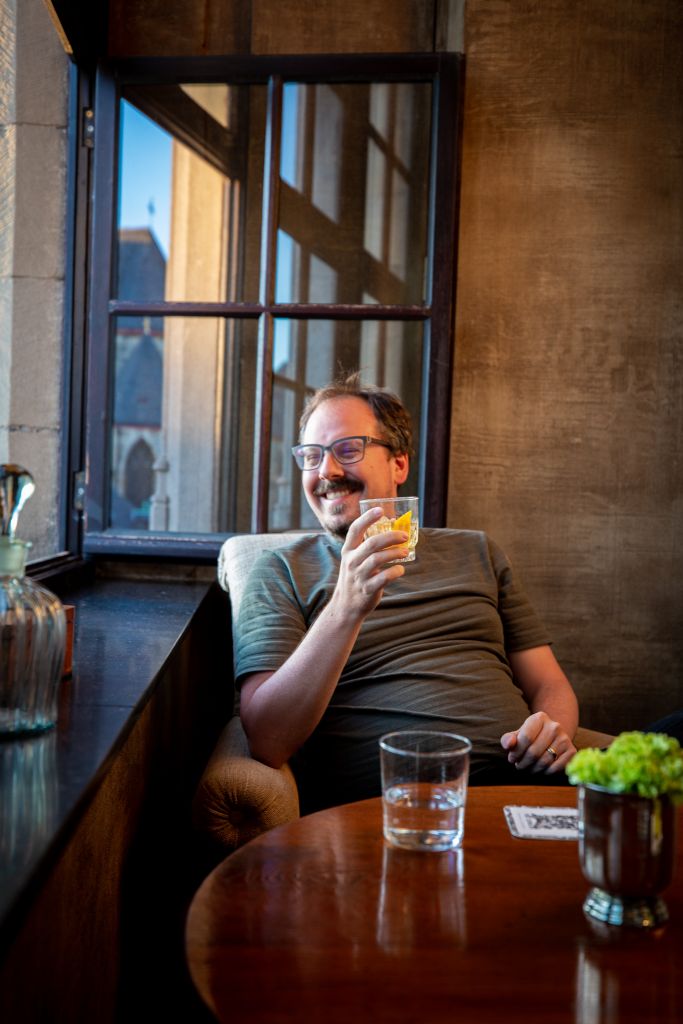
This post was originally published in July 2022 and updated in July 2025 after a return visit to Ghent.
Do you have any questions? Comment below and I can help!
Share this story


